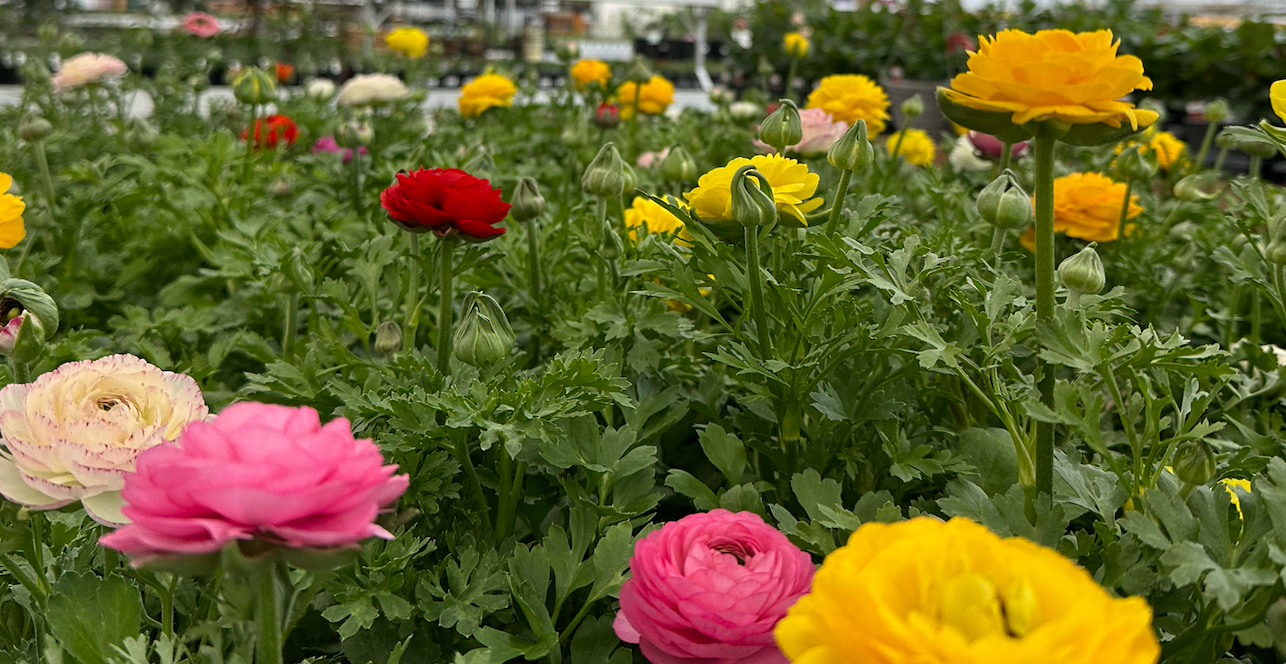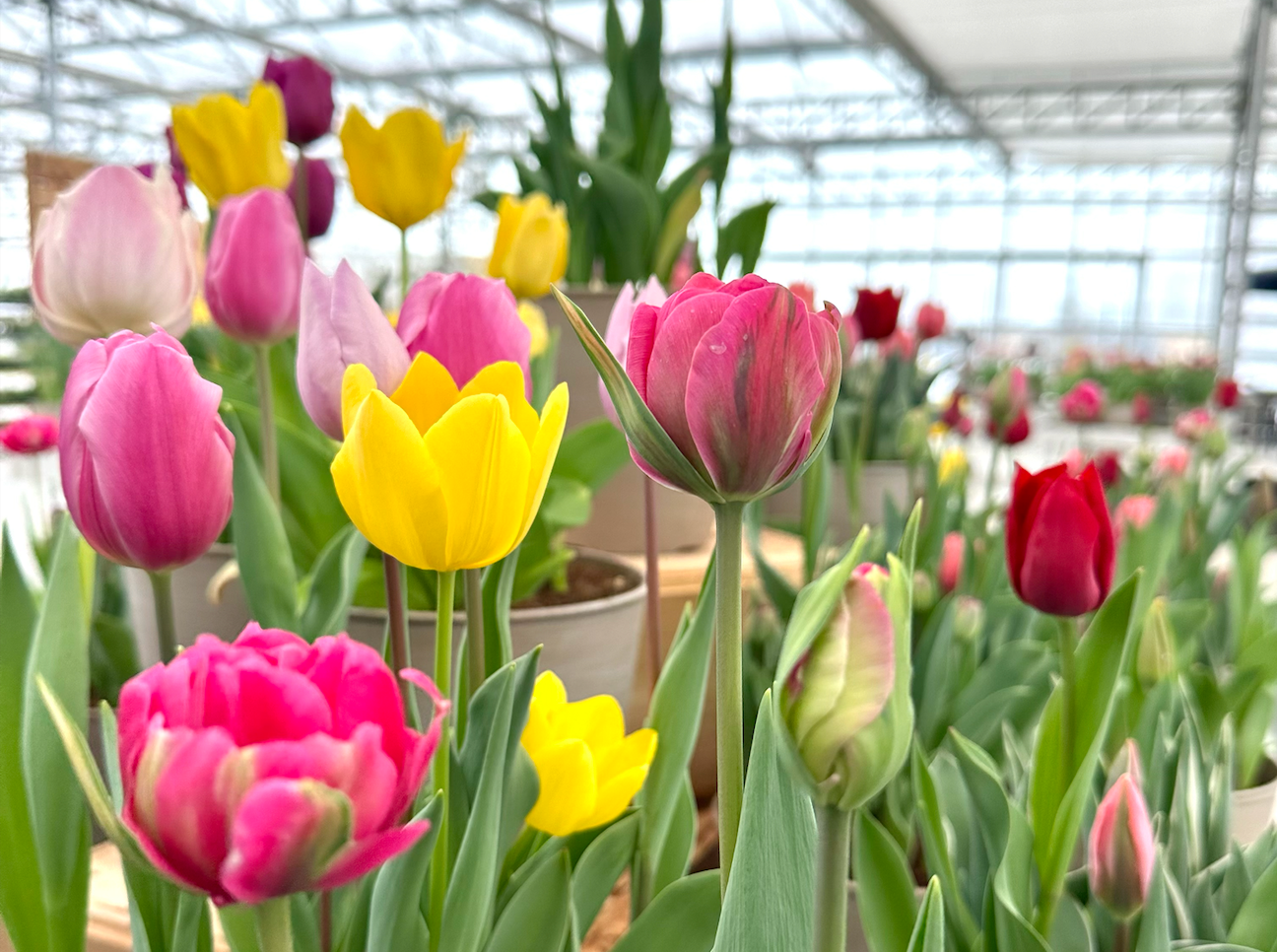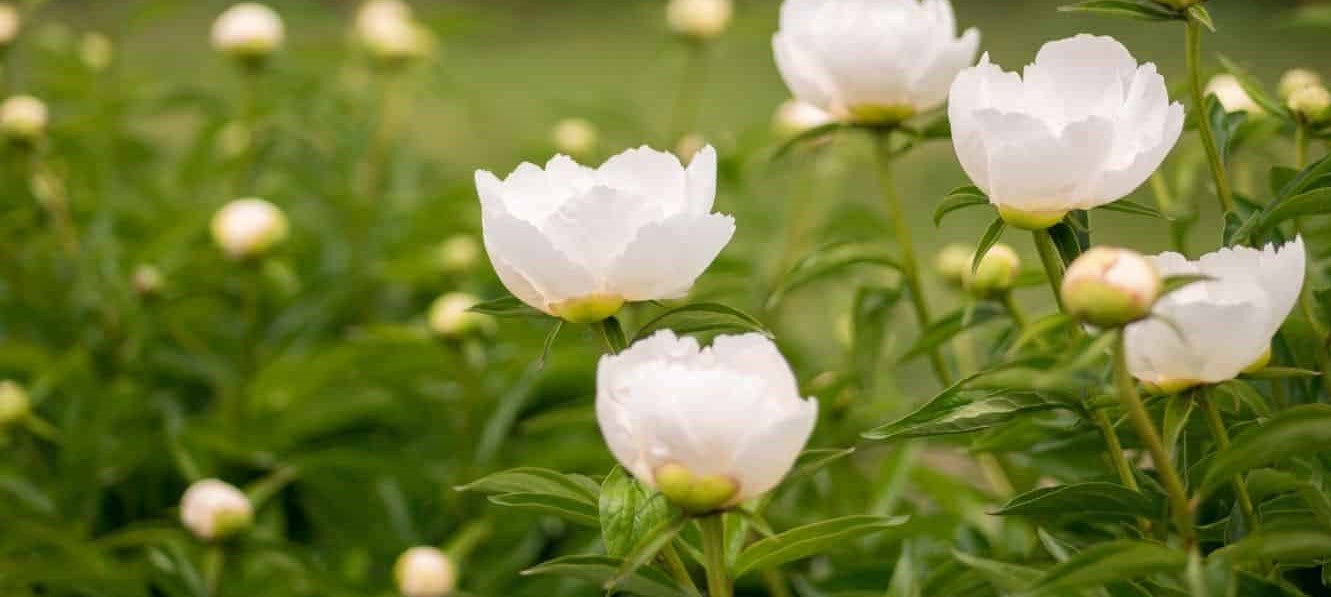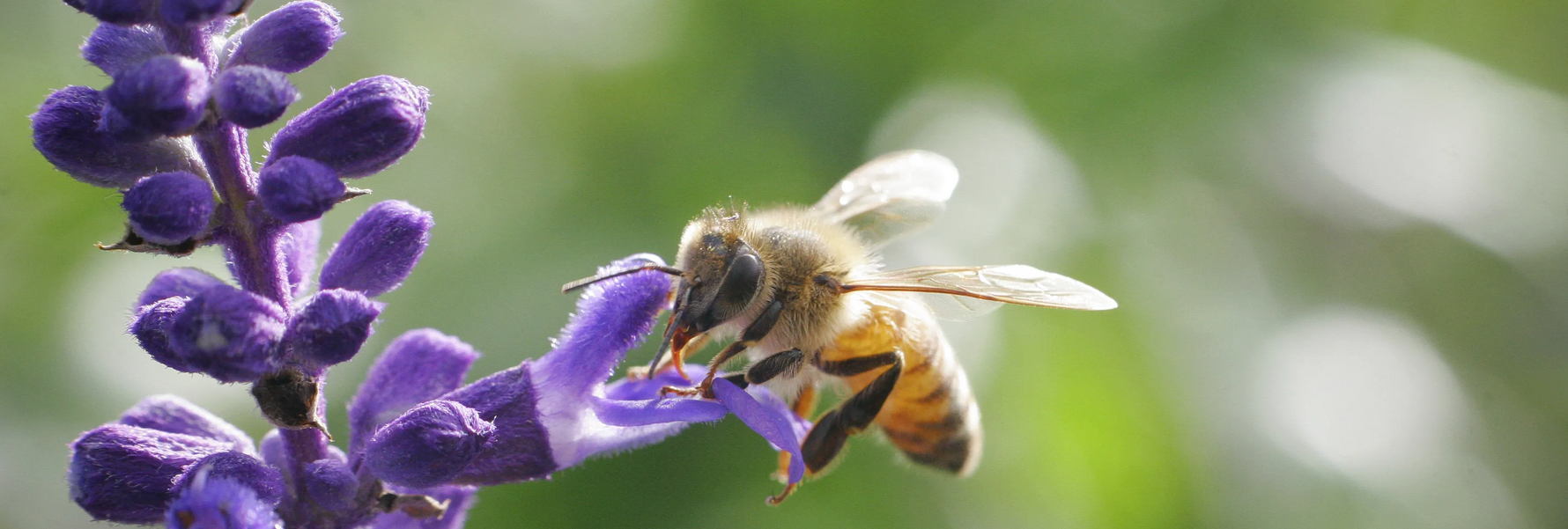Hello! Welcome to the very first post from van der Meer greenhouses! I just wanted to do a quick introduction of myself before we begin and don’t worry you can easily skip this paragraph if you want to. My name is Lauren van der Meer and I am part of the 3rd generation of van der Meers to work with van der Meer greenhouses. I have over 12 years experience working with plants and am so excited to be starting this blog.
It’s March and the minute that we hear the sounds of water running or we drive through that first puddle of the year we immediately want to run to Van der Meer Greenhouses, buy as many seeds as possible, fill up those seedling trays/ egg cartons/ pots with dirt, and start growing.
Before you go completely plant-happy there are a few things you may want to consider.
When should I sow my seeds?
Theoretically you can start seeds at any time of the year, however you have to ask yourself “how many zucchinis can I fit in my house before it thaws?” I have fallen victim to the urge to start all my seedlings the minute I see the snow begin to melt only to have far too many long leggy tomatoes that never made it into the garden.
According to the Farmers' Almanac “On average, your last spring frost occurs on May 21” that means on April 1st we still have 51 days until we can tentatively start planting in the garden. Some varieties of tomatoes grow from seedling to mature plant in 60 - 65 days meaning if you plant them inside they will be almost fully mature and have needed a much bigger pot to be planted in by the time you can bring them outside.
Now if you are planting one or two seeds - great no problem! Pot them up into bigger pots and enjoy having your cherry tomatoes by the beginning of June. However if you have plans to put upwards of 20 tomatoes in your garden you may want to rethink a few things - I cannot fit 20 2gallon tomatoes in my house and my garage does not have nearly enough light to sustain them.
So… what can I start seeding early?
Some plants to start early
Bell peppers / Hot peppers, a very long growing season and relatively small plants. Keep in the sunniest spot you can find.
Basil and most other herbs (NOT DILL): long growing season, keep warm.
Melons: a warning for these, they may need a long growing season but they also get rather big rather fast - plant into bigger pots and keep very warm.
Brassicaceae (latin family name of cabbages, broccolis, cauliflowers, etc) have long growing season, but can get leggy in the house.
Some plants to not bother starting inside at all
Peas : grow so fast and very easy to seed in the garden.
Beans: see peas above.
Lettuces: They can be started inside but they grow very fast and will most likely need to be harvested before you transfer them to the garden. Plant from seed in a garden or pot and don’t worry about moving them. You can seed a couple crops of lettuce in one season.
Root vegetables: very hard to transplant without delaying or stopping growth.
Dill: grows incredibly fast- will seed itself everywhere.
At the end of the post I have a link to a comprehensive seeding chart from the Farmers’ Almanac.
What do my seeds need to sprout?
Each plant has unique seeding requirements you may want to look into. Most people read the seed packet but please be warned: they are not always correct.
Some areas of concerns are:
Seeding depth: some plants want to be lightly covered in dirt, others want to be deeply buried, others still will refuse to sprout if covered, some seeds even want to be kept in the refrigerator for a month before they will think about sprouting (looking at you delphiniums!)
Heat and the amount of sunshine: are very important too. Some plants only sprout when they have a certain amount of heat during the day - this amount of heat can fry other seedlings.
Water: Some plants want to be watered until they are dripping wet - this will kill other seedlings.
Soil: The soil you choose for your new seedlings should be light and preferably new. Using old soil can present problems like funguses or harmful microbes that can stop seedlings from doing well. Since you don’t need that much of it, getting new soil for your seedlings each year is a great way to make sure they are given the best starting point. Van der Meer Greenhouses has an excellent supply.
As much as I would like to give you the exact requirements for each seed I have a maximum amount of words so I will instead suggest you take a quick minute to google any new seeds you’ve purchased and learn about,
Planting depth
Sun/Heat requirements
Watering
Anything else (like being put in the refrigerator for a month)
However this is all for new seeds or seed you haven’t had success with: if you’ve seeded a plant before with success: keep doin’ what you’re doin.’
How many seedlings do I need?
This is an amazing question because it will be completely unique to you and your situation. But a blanket piece of advice is: you do not need more than 2 zucchinis… I kid… but this does apply to about 95% of the gardening population so please take a good look at your family and friends and their zucchini consumption abilities before you make the leap into planting more than 2.
It can be very tempting to plant every single seed that comes in the little packet but each of those plants will grow into a plant that is sometimes capable of producing upwards of 100 fruits (looking at you cherry tomatoes) which means you have to ask yourself “what are my plans for these plants?”
Realistically if you are planning to eat the tomatoes fresh you will only need one or two plants per person for the season, likewise if no one around you except yourself likes green beans a whole row of them could prove to be far too many. This of course all depends on if you want to take the time in August and September to can, freeze, or otherwise store your harvest. If this is something you enjoy and have time for: go for it! I myself hate canning tomatoes and therefore limit myself to four tomatoes a year but I have a lot of cold storage and am able to easily store a lot of squash and therefore I plant upwards of 10 squash plants.
When it comes to seeding your plants a good rule of thumb is to plant double what you need and then choose the strongest - healthiest plants from the group. The rest of these seedlings you can simply compost (and be surprised what starts growing in your compost later on). Any seeds that are leftover seal in the packet with tape and mark the year on them. Most seeds are good for around 2 years if stored in a dry cool area.
Now if I have reached you too late. I apologise but don’t despair. You have a lot of options for you and your seedlings.
Option 1. Make sure you transplant your seedlings once they have filled their current container with roots. This will help make sure your seedlings continue to grow and since this lengthens your growing season can help you get an early crop! Just remember to make sure they have a lot of sun and a big enough pot. If you find that you are running out of room remember that pets and children can be bundled up and put outside but plants cannot.
Option 2: Throw them out and start again (it’s still early enough!) If your seedlings are stringy, droopy and overall very unhappy it is in no way too late to start over! Seeds can be purchased at Van der Meer Greenhouses in store.
Option 3: Throw them out and swing by Van der Meer Greenhouses in May to purchase seedlings that are garden ready. Easy, fun, and the kids and pets can stay inside for the month of April.
Happy planting!
Sources
When to seed
https://www.almanac.com/gardening/planting-calendar/MB/Winnipeg
Van der Meer Greenhouses online Home
https://vandermeergardencentre.ca/








